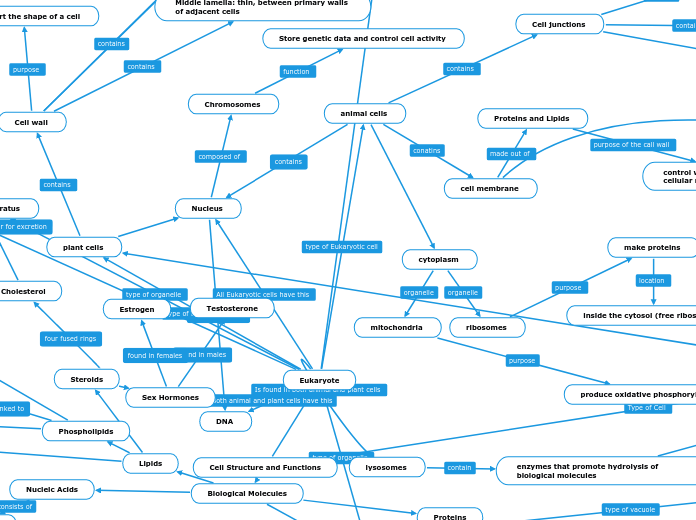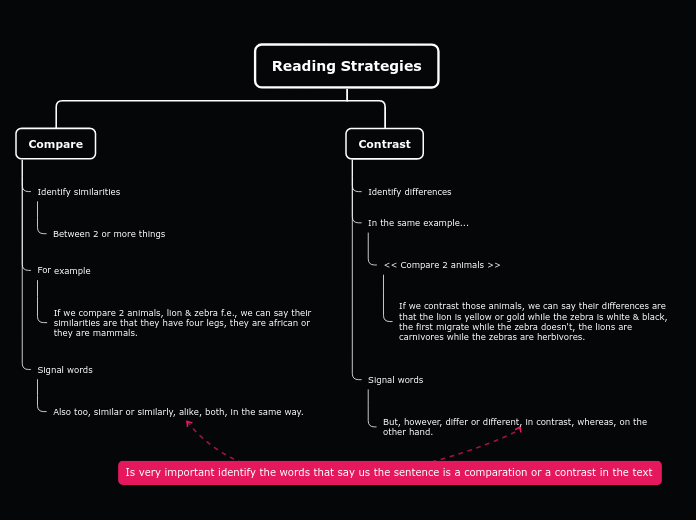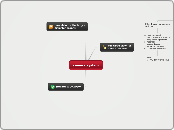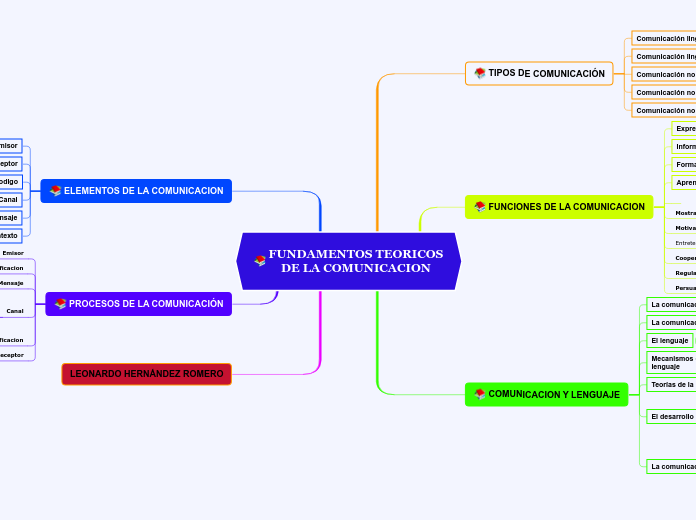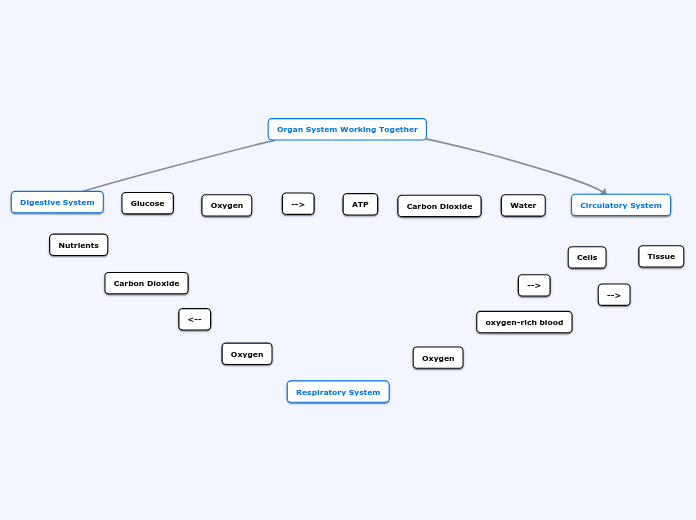The Cell Cycle
Mitosis
Prophase
Chromatin
Chromatin condenses into discrete chromosomes;
Nucleolus disappears but nucleus remains
Mitotic spindle begins to form
microtubules and associated proteins that is involved in the movement of chromosomes during mitosis
Telophase
final stage of mitosis, in which daughter nuclei are forming and cytokinesis has typically begun.
Anaphase
chromatids of each chromosome have separated and the daughter chromosomes are moving to the poles of the cell.
Metaphase
spindle is complete, chromosomes, attached to microtubules at their kinetochores, are all aligned at the metaphase plate.
Prometaphase
nuclear envelope fragments and the spindle microtubules attach to the kinetochores of the chromosomes.
Meiosis
PMAT I
PMAT II
Sex Cells
4 genetically different
daughter cells
Binary Fission
2 identical daughter cells
ions diffuses not simply down the gradient but the electrochemical gradient
molecules which have thermal energy
Substance will go from more to less concentrated area
Substance moves across concerntration gradient without the need of energy
Concentration gradient represents energy and drives the fusion in this transport
Facilitated Diffusion
Affect polar molecules and ions impeded bt the lipid bilayer of the membrane and helps diffuse passively with help from transport proteins hence the proteins facilitate the diffusion
Channel proteins
provide the corridor that allows specific molecules or ions to cross the membrane includes the ion channels functioning as gated channels
Carrier proteins
Includes the glucose transporter and change in shape that somehow translocates
Move down their concentration gradient
Osmosis is the diffusion of water
Water diffused acrossed the membrane from the region of higher free water concentration to lower free water concentration
Either artificial or cellular such as plant cells to keep the concentration of plant stable
Energy Transfers
Energy Coupling uses exergonic process to drive an endergonig one
ATP is responsible for this and acts as the immediate source of energy powering cellular work
ATP or Adenosine Triphosphate
ATP is a renewable resource that can be regenerated by the addition of phosphate to ADP. this is done through the ATP cycle whcih occurs at a fast pace
Hydrolyzed ATP can cause a release of energy that heats the water which is used to perform three types of cellular work: chemical, transpoirt, and mechanical
Chemical reactions occur when the cell uses free energy of ATP with endergonic enzymes. the two reactions can be coupled producing a enxergonic reaction
Sugar ribose, with nitrogenour base adenine and chain of three phosphate groups bonded to it
Bonds between phosphate groups can be broken through hydrolysis reactions. taking a phosphate creates ADP, through exergonic reactions
broken phosphate bonds sometimes referred to as high energy phsophate bonds
energy ATP releases on losing phosphate group is greater than energy most other molecules could deliver
Also responsible for nucleoside triphosphates used to make ATP
Free Energy
Exergonic Reaction
proceeds with a net release of free energy. delta G would be negative for a lose of energy. representing the max amount of work that can be done
Endergonic Reaction
Absorbs free energy from its surroundings. stores free energy in the molecules. they are nonspontanous reactions the release of energy is in one direction
Because the cell is always busy, equilibrium is not reached by the cell creating the hydroelectric system
Equilibrium Reactions
Reached by an isolated system where no more work is able to be done. the cell reaches a metabolic equilibrium meaning energy is stagnant and the cell dies
Sunlight provides a main source of free energy for organisms
The portion of a systems energy that can perform work when temperature and pressure are uniform throughout the system as in the living cell
Enables a cell to maintain internal concentration of small solutes that differ from concentration in its environment
ATP Hydrolysis
Sodium Potassium Pump
Cells have voltages or electrical potential energy
Voltage of a membrane is called membrane potential
Inside of cell is negative compared to the outside the membrane potential favors the passive transport of cations into the cell and anions out of the cell
Drives diffusion of ions across a membrane a chemical force and electrical force whcih is called the electrochemical gradient
In cases where electrical forces due to the membrane potential oppose the simple diffusion of an ion down its concentration gradient active transport may be necessary
the major electrogenic pump or transport protein that geenrates voltage across a membrane, of animals
electrogenic pump
Proton gradients in cells
generate ATP synthesis during cellular respiration
the main pump for plants, fungi, and bacteria is the proton pump which transports protons out of the cell
Help store energy that can be used for cellular work by generating voltage across membranes
Pumps solutes across a membrane against its gradient requiring work so the cell expands on energy
cholesterol
Cell Communications
Use of ATP
Glycosis
Pyruvate oxidation
Krebs Cycle
require oxygen
Mitochondrial matrix
per 1 acetyl CoA
Forms 3 NADH
electron carriers used in:
Oxidative Phosphorylation
consists of :
Electron Transport Chain (ETC)
creates a concentration gradient of H+
O2 is final electron receiver
Chemiosmosis
26-28 net ATP per glucose
releases 1 CO2
Forms 1 ATP
Forms 1 FADH2
The pyruvate that was previously formed is oxidized (in the presence of O2).
When the pyruvate is oxidized, it loses electrons which is then transferred to NAD+ to form the NADH we see later
Acetyl CoA is then formed
Enters the citric acid cycle (Kreb's cycle) and results in the creation of more electron carriers, NADH and FADH2
This occurs inside of the mitochondria, as the pyruvate enters
Two major phases of Glycolysis:
Energy Payoff Phase
Now we are using two molecules of G3P, so each product will be doubled
More ATP is made in the last 5 steps than in the first one, therefore being called the energy payoff phase
Step 6 (continuing from step 5): Two sequential reactions- G3P is oxidized by the transfer of electrons to NAD+, which forms NADH. Then using energy from this exergonic reaction, a phosphate group is attached to the oxidized substrate, making a high-energy product.
Step 7: The phosphate group is transferred to ADP in another exergonic reaction. The carbonyl group of G3P has been oxidized to the carboxyl group --COO- of an organic acid of 3-phosphoglycerate.
Step 8: The enzyme resulting from the phosphoglyceromutase relocates the remaining phosphate group
Step 9: Enolase causes a double bond to form in the substrate by extracting a water molecule which yields PEP
Step 10: The phosphate group is transferred from PEP to ADP, which forms pyruvate
Energy Investment Phase
Step 1: involves addition of phosphate from ATP to Glucose to form glucose 6-phosphate using the enzyme Hexokinase
Step 2: converts this to Fructose 6-phosphate
Step 3: *very important* uses the enzyme PFK to convert Fructose 6-phosphate to Fructose 1,6-biphosphate
Step 4: Aldolase cleaves this sugar molecule into two different three-carbon sugars
Step 5: The 6 carbon sugar splits into two molecules of 3 carbon each form DHAP and G3P. Eventually DHAP converts into G3P, so we have two molecules of G3P formed from one molecule of glucose
In order for glycolysis ("sugar splitting") to begin, electrons must be extracted from food (glucose) and added to NAD+, an electron carrier.
Pyruvate is then formed from the glucose
Specifically breaks down glucose into two molecules of pyruvate
This occurs in the cytoplasm outside of the mitochondria
Signal Transduction
The process by which a cell responds to substances outside the cell through signaling molecules found on the surface of and inside the cell.
Reception
This is the process where a signal molecule is received by a receptor protein. Receptors can be intracellular or membrane receptors. Tyrosine Kinase receptors and G-Protein Coupled receptors are examples of membrane receptors because when they receive a signal on the outside of the cell, they respond with a process that occurs inside the cell.
After the signal molecule activates the receptor, the receptor begins a series of steps that lead to transduction.
When the receptor is done transferring the signal to the next series of steps, it needs a way to stop sending the signal. This is done by deactivating the protein by removing the molecule that's powering it. Like turning GTP to GDP or ATP to ADP.
Transduction
The amplification effect
In most cases of signal transduction, there are multiple different signals being communicated at the same time. This happens when one activation produces the means for multiple other activations.
Transduction begins when the signal molecule changes the receptor in some way, activating it. Transduction is usually a series of processes that relay the initial signal to many molecules in a pathway.
This process is usually in the form of a phosphorylation cascade. A phosphorylation cascade is a sequence of signaling events where one enzyme phosphorylates another in a long chain. Each time an enzyme is phosphorylated, it uses ATP to transfer its signal.
When the protein is activated by ATP, it passes its signal to the next protein kinase in the chain. This process of taking the signal and transferring it to the next protein in the chain with ATP continues over and over until it reaches its final destination
After the signal is transferred, it is important for the signal to stop being transferred. This happens through the removal of the phosphate from the attached protein. This is called dephosphorylation, and it essentially deactivates the protein, turning it off.
The protein kinase takes a phosphate group from ATP, activating it. The ATP turns into ADP. In a long chain, there is a need for an abundance of ATP to give energy to each signal transfer.
Response
At the end of the transduction pathway, when the signal finally reaches its destination, the signal triggers a cellular response.
Different signals and different pathways trigger many different responses. These responses can do things like regulate gene expression, regulate the activity of other proteins in the cell, or other cell activities.
G-Protein Coupled Reactor
G protein coupled receptors (GPCRs) are integral membrane proteins that are used by cells to convert extracellular signals into intracellular responses
A receptor must be activated to change its shape. When a signaling molecule binds to an external side of the receptor, it will change shape.
The cytoplasmic side binds to activate a G protein. Then the activated G protein has a GTP carried over
The activated G protein leaves the receptor to diffuse along the membrane to attached to an enzyme that causes the enzyme to change its shape and activity. This leads to the next step in the process of causing cellular respiration
When a signal molecule binds, it can be undone. The changes that are made by the attachment or activation of GPCR, G proteins, and enzymes are not permanent and can be reused
cAMP is a secondary messenger for the G protein
Step 1 : GCPR is activated by a messenger bind
Step 2 : The GCPR is activated to the G protein and get attached by the GTP, which makes an activated G protein
Step 3 : After the G protein and GTP bind are activated, they bind to an adenylyl cyclase. The GTP is then hydrolyzed which causes the adenylyl cyclase to be activated.
Step 4 : Activated adenylyl cyclase changed ATP to cAMP
Step 5 : A second messenger cAMP activates another protein that starts cellular responses
Tyrosine Kinase Receptor
Step 1 : Receptor tyrosine kinase starts out as inactive monomers, each having a ligand binding site
Step 2 : Monomers combine to make dimers when signal molecules bond with receptor sites. These signal molecules are often growth factors
Step 3 : Dimerization activates phosphorylation of the tyrosines dangling in the cytoplasm
Step 4 : Fully phosphorylated, the active receptor is now recognized by multiple relay proteins. Each can trigger a separate cellular response
Membrane
Passive Transport
Diffusion
move from a region of high concentration to a region of low concentration.
Facilitated diffusion
Osmosis
Tonicity
Isotonic
Normal
Flaccid
Hypotonic
Lysed
Turgid/normal
Hypertonic
Shriveled
Plasmolyzed
diffusion of water from lower solute concentration to high solute concentration
Active Transport
sodium potassium pump
aids in transport of ions across membranes against concentration gradient
Phospholipid bilayer
membrane fluidity
viability in harsh conditions
endospores
HDL
LDL
Testosterone
Estrogen
Cholesterol
Sex Hormones
Glycerol
Amphipathic
Trans Fats
Hydrogenation
Hydrogen Bonds
Phosphodiester Bonds
Cell Structure and Functions
Biological Molecules
Carbohydrates
Polysaccharides
Energy Storage
Glycogen
Starch
Amylopectin
Amylose
Structure
Cellulose
Disaccharides
Maltose
Lactose
Sucrose
Monosaccharides
Fructose
Galactose
Glucose
Nucleic Acids
Nucleotides
Nitrogenous Bases
Pyrimidines
Uracil
Thymine
Cytosine
Purines
Guadine
Adenine
Phosphate
Pentose Sugar
Deoxyribose
Ribose
Proteins
Translation
Cytoplasm
Ribosomes
Amino Acids
Transcription
mRNA
tRNA
Codon
DNA
Enzyme
Base Pairs
Sugar
Phosphates
Nucleus
Lipids
Steroids
Phospholipids
Phosphate Group
Hydrophobic(nonpolar) tail
Hydrophilic (polar) head
Triglycerides
Fatty Acids
Saturated
Unsaturated
Eukaryote
vacuoles
central vacuoles
Food vacuoles
cells engulf food and other particles
contractile vacuoles
pump excess water out of cells
freshwater protists
cytoskeleton
Microtubials
Cilia and Flagella
centrosomes and centrioles
chromosome movements in cell division, organelle movements
Intermediate filaments
anchor age of nucleus, formation of nuclear lamina
Helps support the cell and maintain the shape
microfilaments(actin filaments)
muscle contraction, cytoplasmic streaming(plant), changes in cell shape
ER Accounts for more than half of total membrane
Smooth ER : Lacks ribosomes attached to it
synthesize lipids, metabolize carbs, detoxifies drugs, poisons, and stores calcium ions
rough ER: Surface is studded with ribosomes
secrete glycoproteins, membrane factory of the cell
Golgi Apparatus
Processes proteins form the ER and sort them for transport to their final destination
Nucleus
Chromosomes
Store genetic data and control cell activity
animal cells
Cell junctions
tight junctions: prevents the movement of fluid or substances across the cell
Desmosome: allows some substances to move across the cell
Gap junctions: everything can move across the cell
cytoplasm
ribosomes
make proteins
Outside endoplasmic reticulum (bound ribosomes)
inside the cytosol (free ribosomes)
mitochondria
produce oxidative phosphorylation
ATP
cell membrane
Proteins and Lipids
control what goes in and out of the cell and cellular messaging
plant cells
Cell wall
secondary cell wall: between plasma and membrane and the primary cell wall
Primary cell wall: thin and flexible
Middle lamella: thin, between primary walls of adjacent cells
To support the shape of a cell
lysosomes
enzymes that promote hydrolysis of biological molecules
break covalent bonds
DNA
Prokaryote
Bacteria
Ribomes
protein
Cell Wall
Flagella
single celled organisms
Oxygen in metabolism
obligate anaerobic
uses fermentation
facultive anaerobics
carry out aerobic
carry out anaerobic respiration
obligate aerobes
cell respiration
Nucleoid
chromosomal DNA
nutritional modes
heterotroph
chemoheterotroph(organic compunds)
photoheterotroph(light)
autotroph
chemoautotrophs(inorganic materials)
photoautotroph(light)
Archaea
Flagellum
Extremophiles
Methanogens
methane waste product
swamps and marshes
Extreme Thermophiles
very hot environments
Extreme Halophiles
saline environments
